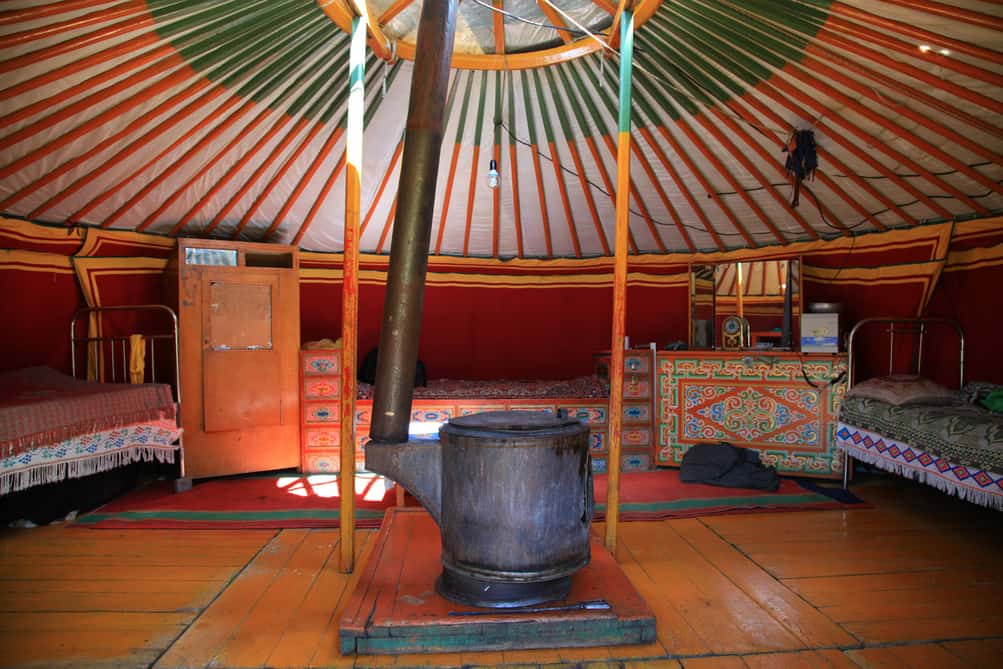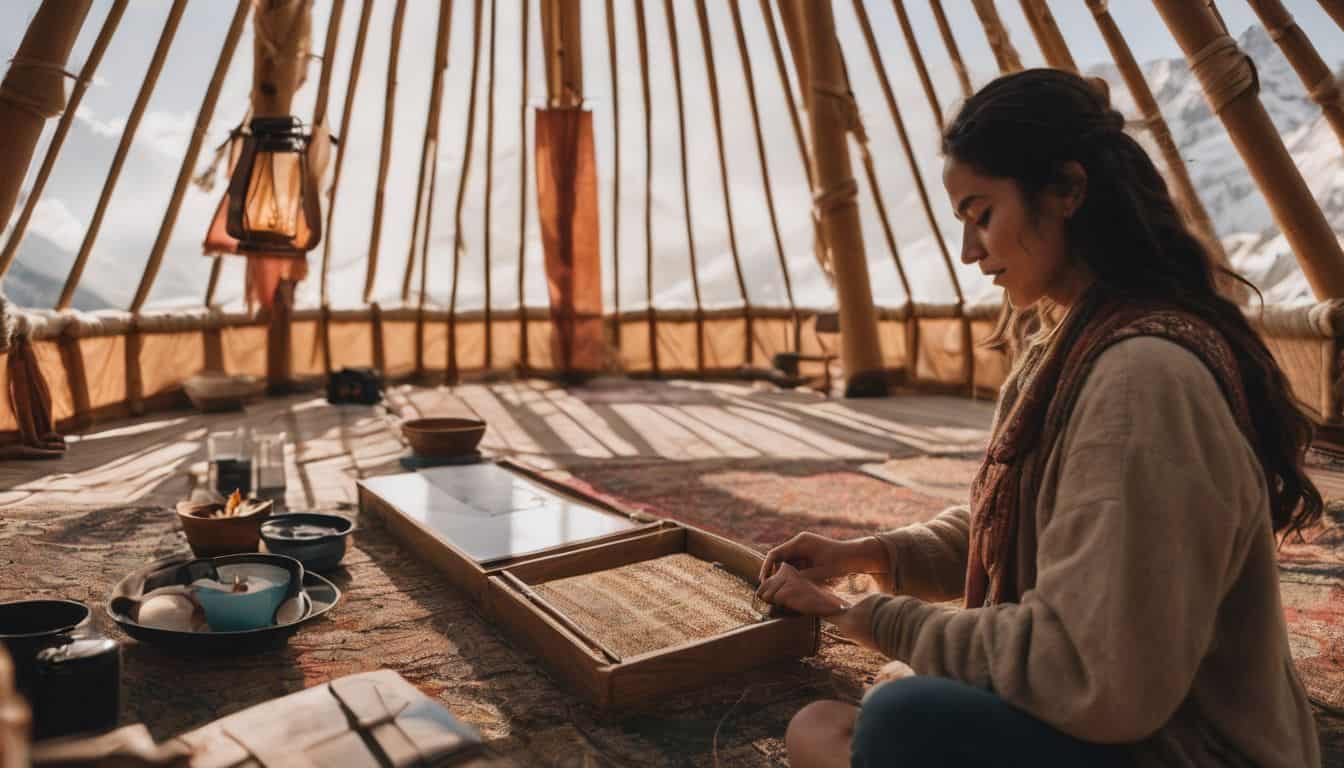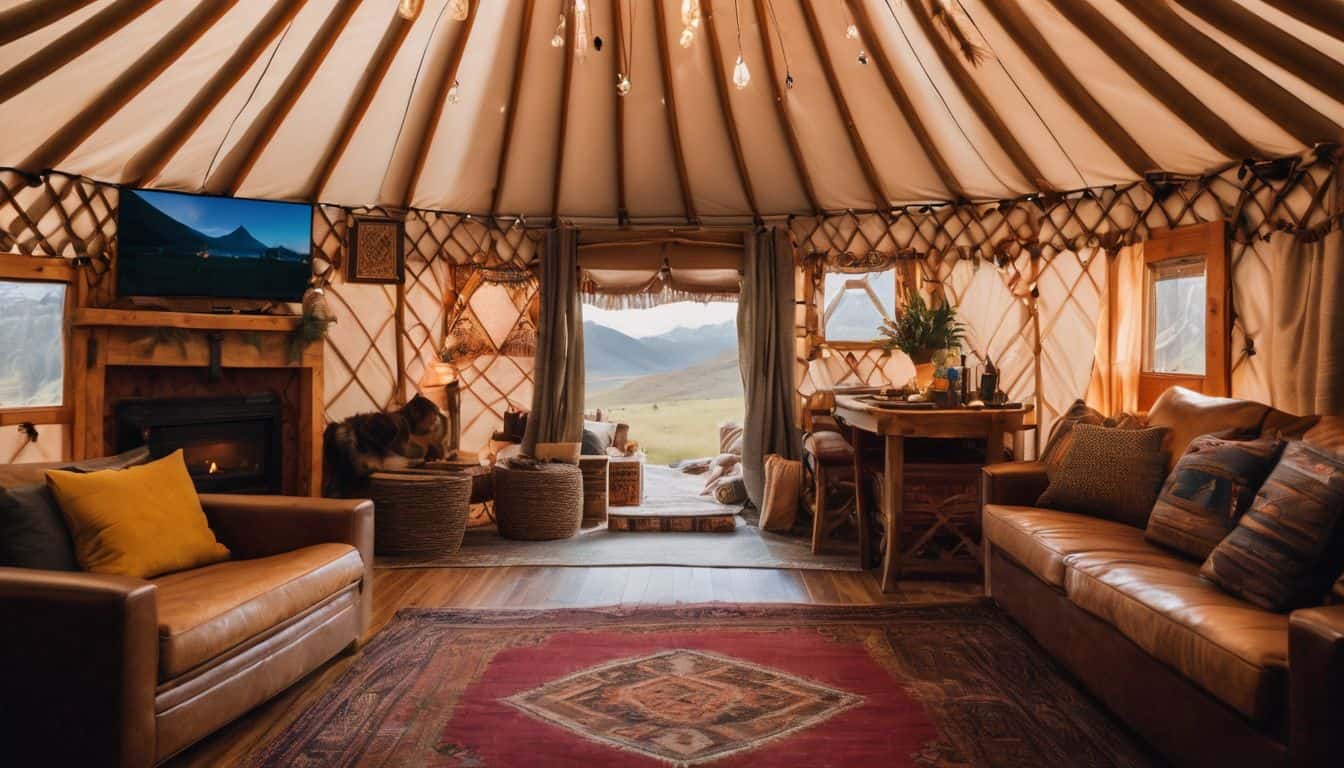Yurts offers a unique blend of simplicity and connection with nature. However, to truly make a yurt your home, customization is key. We will walk you through the process of customizing your yurt for maximum comfort, ensuring that your circular dwelling meets all your needs and reflects your style while maintaining the essence of yurt living.
Assessing Your Needs
Before diving into customization, it is crucial to assess your lifestyle requirements, consider climate factors, and determine whether your yurt will be for long-term living or occasional use. This initial evaluation will guide your customization choices and help prioritize modifications. Consider your daily routines and how they might unfold in a yurt environment. Consider work-from-home needs, hobbies, and social activities requiring specific spaces or setups.
Structural Customizations
Insulation Upgrades
Proper insulation is vital for year-round comfort. Consider adding reflective insulation to walls and roof, or opt for natural materials like wool or hemp for an eco-friendly approach. Proper installation techniques are crucial to maintain the yurt’s breathability while improving thermal efficiency. Pay special attention to the roof, as it’s often the area where most heat loss occurs in a yurt.
Window and Door Modifications
Adding extra windows enhances natural light and ventilation. For a more dramatic change, consider installing French doors or sliding glass doors to create a seamless indoor-outdoor living experience. When planning window placement, consider cross-ventilation and the path of the sun throughout the day to optimize natural lighting and temperature control.
Flooring Options
A raised platform can significantly improve insulation and moisture control. For ultimate comfort, consider installing a radiant floor heating system, which works exceptionally well with the yurt’s circular design. Choose flooring materials that are durable and easy to clean, such as bamboo or cork, which also add to the yurt’s natural aesthetic.
Interior Layout and Design
Space Optimization
Using furniture placement and room dividers, create distinct living areas within your yurt. Utilize vertical space by adding a loft for sleeping or storage, maximizing the usable area in your compact dwelling. Consider using curtains or folding screens to create flexible, easily reconfigured spaces.
Furniture Selection
Choose multi-functional furniture that can adapt to different needs. Custom-built pieces that fit the curved walls can make the most of every inch of space while adding a unique touch to your yurt’s interior. Look for items like convertible sofas, drop-leaf tables, and nesting furniture that can be expanded or tucked away as needed.

Climate Control Solutions
Maintaining a comfortable temperature year-round is essential. Wood or pellet stoves can provide efficient heating in colder months, while ceiling fans and strategically placed windows can help with cooling and ventilation during warmer periods. Consider installing a programmable thermostat to optimize energy use and maintain consistent comfort.
Lighting and Electrical Systems
Integrate solar panels for off-grid living or as a supplement to traditional power sources. Get creative with lighting to enhance ambiance and functionality – consider LED strip lights along the lattice walls or a statement chandelier at the center ring. Incorporate task lighting in critical areas such as the kitchen and workspace to ensure adequate illumination for various activities.
Plumbing and Water Systems
Design a compact bathroom that maximizes space without sacrificing comfort. Focus on efficient layouts and multi-purpose fixtures in the kitchen. If you aim for sustainability, consider implementing a rainwater harvesting system with proper filtration. Explore composting toilet options for an eco-friendly waste management solution.
Outdoor Living Spaces
Extend your living area by designing a deck or patio that complements your yurt. An outdoor kitchen or dining area can significantly enhance your enjoyment of the surrounding nature. Consider adding a pergola or awning to create a shaded outdoor space that can be used even during hot summer days.
Eco-Friendly Customizations
Embrace sustainable living by using recycled materials in your customizations. Implement a greywater system to reduce water waste, and consider a composting toilet for an off-grid solution. If your location is suitable, look into renewable energy options beyond solar, such as small-scale wind turbines.

Aesthetic Enhancements
Choose a color scheme that reflects your personal style and complements the natural surroundings. Add personal touches through decor, and consider enhancing the central skylight or adding additional dome windows for a dramatic effect. Incorporate natural elements like indoor plants or a small indoor water feature to connect your interior space with the outdoors further.
Storage Solutions
Creative storage is key in a circular space. Build custom shelving units that follow the curve of the walls, utilize under-floor storage compartments, and design innovative closet spaces that make the most of the yurt’s unique shape. Consider using vacuum storage bags for seasonal items to maximize space in compact storage areas.
Safety and Security Upgrades
Pay attention to safety in your customization process. Install smoke detectors and fire extinguishers, reinforce doors and windows, and add external lighting for security. Consider a small safe for valuable documents and items, and explore smart home security options that can be integrated into your yurt’s systems.
Customizing for Specific Uses
Yurts are versatile structures that can be adapted for various purposes. Whether setting up a home office, creating a glamping retreat, or designing an educational space, tailor your customizations to support the yurt’s specific function. For a home office, ensure adequate power outlets and consider soundproofing options to create a quiet work environment.
DIY vs. Professional Customization
While many customizations can be DIY projects, assess your skills honestly and know when to call in professionals, especially for complex modifications involving plumbing or electrical work. Research local building codes and permit requirements to ensure your customizations comply with local regulations.
Maintenance Considerations
As you customize, keep future maintenance in mind. Ensure easy access to all systems for routine checks and repairs, and choose durable materials that will stand the test of time in your specific environment. Create a maintenance schedule to keep your customized yurt in top condition year-round.
Conclusion
Customizing your yurt allows you to create a unique living space that perfectly balances comfort with the essence of yurt culture. By thoughtfully considering each aspect of your yurt’s design and functionality, you can create a home that meets your practical needs and provides a sanctuary that reflects your lifestyle and values.
FAQs
What is a Mongolian yurt, and why are they popular as tiny homes?
A Mongolian yurt is a portable, round tent covered with skins or felt used by nomads in Central Asian countries like Mongolia. Today, people love them for their unique style and cozy feel which makes them perfect as tiny homes.
Can you really design the inside of a yurt to be comfortable?
Absolutely! With clever interior design, you can transform the inside of your mongolian ger or yurta into a warm and inviting space that’s both stylish and comfy—just like any modern home.
How do I keep my yurt warm in winter or cool in summer?
Focus on insulation! The “R-value” measures how well material insulates; higher R-values mean better temperature control so your yurt stays snug in winter and chill in summer.
Are there special considerations when furnishing my Mongolian ger?
Indeed, since the walls curve inward, furniture should fit this shape—think circular sectionals or foldable pieces that maximize space without cramping up your style.
Is it possible to live off-grid in a yurt comfortably?
You bet! With the right setup—think solar panels for power, partition walls for privacy, maybe even a cellar for storage—a well-planned yurt supports an adventurous off-grid lifestyle beautifully.
What if I want separate rooms within my Yurt?
Easy-peasy—with partition walls or canvas dividers you can split up the open space into different areas for sleeping, dining… whatever you need!

Leave a Reply